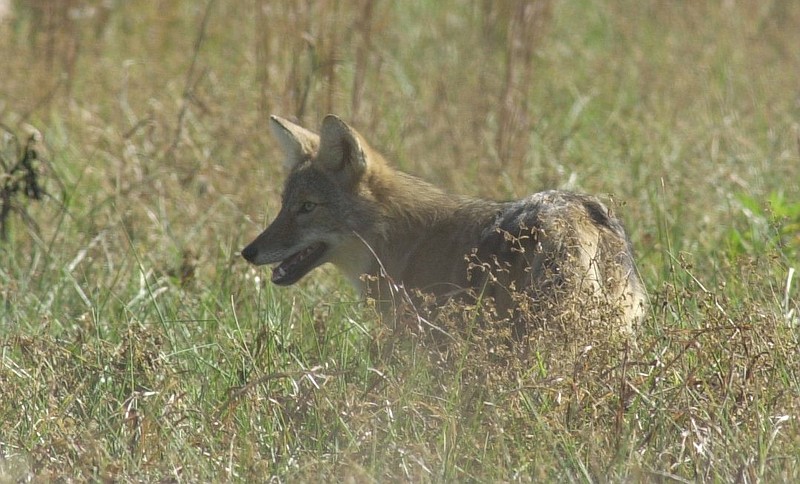Coyotes do not mount their kills on walls for everyone to see, but they are playing an increasing role in managing deer populations in the Southeast, a new U.S. Forest Service study shows.
The study, conducted in South Carolina over 10 years and led by research wildlife biologist John Kilgo, found the number of fawns killed by coyotes to be "much higher than expected."
Kilgo said the role of coyotes in deer management is something that can no longer be ignored as coyotes have become a force in the Southeast. His research is expected to help natural resource managers maintain deer populations at levels beneficial to ecosystem health and deer hunting - an economically important activity in the Southeast.
The skyrocketing influx of coyotes to the region in the last 40 years also has been felt in urban areas. Wildlife experts say the animals are not going anywhere soon.
No instances of coyotes attacking humans have been documented in the Southeast, but they have been suspected of preying on household pets in Chattanooga.
Coyotes are skilled at adapting to their surroundings, which explains why they are surviving in urban environments, said Kirk Myles, a wildlife programs coordinator for the Tennessee Wildlife Resources Agency. Although pets account for a miniscule portion of a coyote's diet, cats and small dogs can be at risk.
"They're going to take advantage of dumpsters and garbage cans," Myles said. "But they don't pose a threat in any way, typically, to a human being."
With breeding season approaching, coyotes may start behaving more aggressively, according to Jeremy Hooper, who is studying the relationship between coyotes and humans as a University of Tennessee at Chattanooga graduate student.
A thread on the online page "Nextdoor" has been active through the last several weeks with discussion among residents of several Chattanooga neighborhoods on how to deal with the presence of coyotes. The page is full of reported coyote sightings.
Coyotes are most active at night, said Hooper, who is charting coyote activity in the Nashville suburb of Belle Meade and providing residents with detailed information of their activity.
"It's too much to ask that we don't let a pet out at night," he said. "That's silly. But if you're going to do it, having them on a leash gives you more control as an owner."
Hooper added that just being outside with your pet can help deter coyotes. He also advised that pet owners make sure there are no attractants on the ground in their yards. Even bird seed, which can attract animals like possums or ground birds, can entice coyotes, he said.
"If people are supplying a resource that a coyote sees as beneficial, he's going to come around more often," Hooper said.
Coyotes can be hunted year-round in Tennessee and Georgia, but most municipalities have ordinances against hunting in city limits, which can leave residents wondering how to get rid of them.
Trapping is a hit-or-miss method, and animal control services can be pricey. Besides, eliminating coyotes is relatively ineffective unless the motive for their presence is removed, experts say.
"If they're hanging around a particular house, there's a reason," said Charlie Killmaster, a biologist with the Georgia Wildlife Resources Division.
If their appetite for fawns continues to increase, it could affect deer hunting regulations in Georgia. But at the moment, Killmaster said, the deer population is stable after a period of more than 20 years when it was overabundant.
"If the coyote impact becomes greater, then certainly, in order to maintain our deer population at a sustainable level, we would have to reduce hunter harvests," Killmaster said. "Unless there's something new that comes out on how to more effectively manage coyotes."
Coyotes have not reduced the deer harvests for hunters in Tennessee, said Myles from TWRA.
"They're out there doing their thing," he said. "When the fawns are on the ground, they're going to target them, because it's an easy food source for them."
Contact staff writer David Cobb at dcobb@timesfreepress.com or 423-757-6249.
